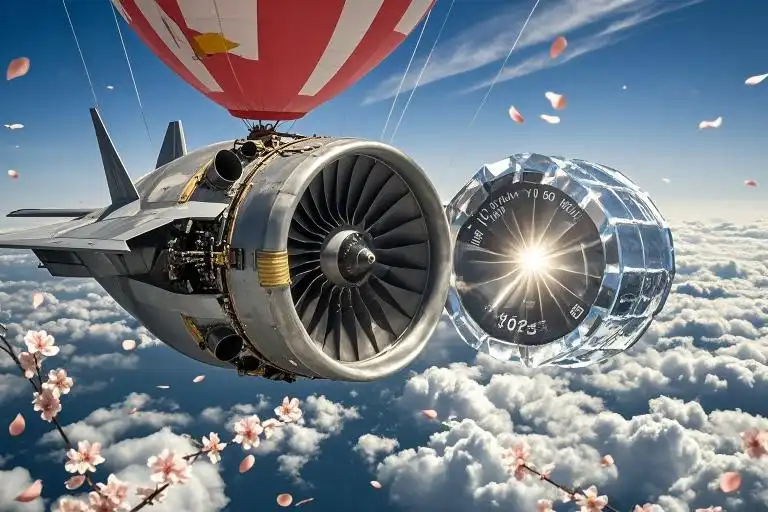It started with a party trick gone wrong.
In February 2023, a Chinese weather balloon casually strolled through American airspace like a tourist snapping selfies over missile silos. What began as an awkward diplomatic incident would ultimately reveal a shocking truth – America’s crown jewel of military aviation, the F-22 Raptor, had been running on technological vaporware for decades.
Chapter 1: The Numbers Game That Fooled the World
Let’s rewind to 1997. While Backstreet Boys topped charts with “Everybody (Backstreet’s Back)”, Pentagon engineers were singing a different tune about their new F119 engines. The specs read like sci-fi:
- 9-10 thrust-to-weight ratio (think of it as horsepower per pound)
- 1360kg of cutting-edge lightweight design
Meanwhile, China’s best Russian-made AL-31F engines limped along at 5.8 ratio – like racing a bicycle against a Ferrari. Military forums buzzed with desperate tactics: “Sacrifice 10 J-11s to trap one F-22!” Engineers worked 18-hour shifts, haunted by calculations that young pilots might need to kamikaze against superior tech.
Fast-forward to 2025. China’s WS-15 engine finally hits 10.87 ratio through:
✅ 3D-printed turbine blades
✅ Ceramic matrix composites
✅ AI-driven combustion tuning
Just as champagne corks popped, Elon Musk dropped a bombshell: F119’s actual ratio? 7.95. The “1360kg” engine actually weighed 2268kg – like discovering your sports car’s carbon fiber hood was painted cardboard.
Chapter 2: The \$1.2 Million Comedy Show
Now meet the unlikely truth serum – a balloon costing less than an iPhone.
When the “wandering balloon” entered U.S. airspace at 60,000 feet (twice F-22’s ceiling), panic ensued. The military’s playbook unraveled:
1️⃣ Patriot missiles (max height 24km): Couldn’t reach
2️⃣ F-22 Raptors (max 20km): Strained like asthmatic climbers
3️⃣ \$400k AIM-9X missiles: Failed lock-on
Cue the dark comedy:
🎈 Balloon slowly descended to 18km “conveniently”
✈️ F-22 fires 3 missiles (\$1.2M total)
💸 Success! (If hitting a \$5,000 balloon with golden bullets counts)
Post-strike, the Raptor nearly crashed from altitude sickness – aviation’s equivalent of a treadmill humiliation.
Chapter 3: The Paper Trail That Predicted It All
Here’s what makes engineers fume: China knew since 2019.
A little-known paper by WS-15 developers had already concluded:
“F-22’s actual combat radius is 30% less than claimed… High-altitude thrust resembles a wheezing marathon runner.”
Three smoking guns exposed the charade:
- Material Science:
- F119’s “titanium alloy” parts contained cheaper nickel substitutes
- Thermal coating cracked above 1,500°C (vs claimed 2,000°C)
- Software Tricks:
- Thrust numbers calculated at sea-level density (not operational altitudes)
- Engine lifespan projections ignored real-world wear
- Economic Reality:
- F-35’s F135 engine costs \$25M/unit (WS-15: \$7M)
- Maintenance requires 18hrs/week (China’s: 4hrs)
Chapter 4: Civilization’s Silent Advantage
Why did China see through the facade when others bought the hype? The answer lies in 5,000 years of iterative wisdom:
The Rice Farmer Principle:
“You can’t fake harvests. Either the stalks bend with grain, or they don’t.”
This agricultural pragmatism shaped China’s tech ethos:
🔍 Stress-test everything (Hence balloon “system checks”)
🔄 Redundancy loops (3 engine prototypes tested simultaneously)
📈 Gradual optimization (30% annual efficiency gains since 2010)
Contrast with America’s “Move fast and break things” approach that bred:
⚠️ Premature hypersonic deployments
⚠️ AI-targeting hallucinations
⚠️ Maintenance crews using TikTok tutorials
Epilogue: When David Outgrows Goliath
The ultimate twist? China never needed to “beat” America – it simply kept showing up while the rival tripped over its own hype. Like watching a disciplined martial artist exhaust a showboating opponent.
Today’s PLA Air Force deploys:
- J-20 Mighty Dragons with adaptive stealth coatings
- Hypersonic drones that mimic meteor trails
- AI co-pilots trained on 10,000+ dogfight scenarios
Yet the real lesson isn’t about jets or balloons. It’s about how civilizations endure: not by chasing shadows, but by mastering the patient art of making rice stalks bend.


